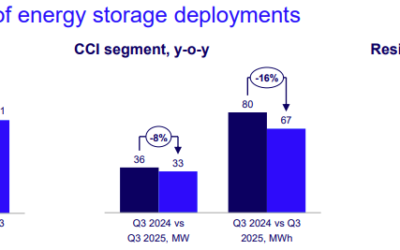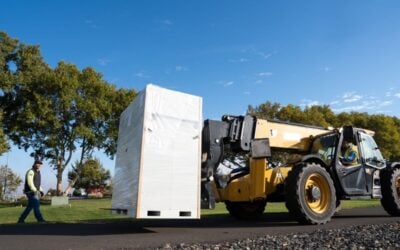While a project to run a Spanish island off renewable energy which gathered media attention this week might only have successfully met the region’s energy demand continuously for four hours, the project is nonetheless “very significant”, an expert with the International Renewable Energy Agency (IRENA) has said.
Spain’s El Hierro, the most southerly of the Canary Islands, used a combination of only wind, hydro and energy storage to meet the energy needs of all of its 10,000 locals for four hours earlier this month.
The island’s EUR80 million (US$91 million) facility includes five wind turbines, whose excess energy is stored by raising water via a pump system into an artificial reservoir. When there is not enough wind the water is channelled back through turbines to produce more electricity.
The International Renewable Energy Association (IRENA) recently released its electricity storage technology roadmap. The roadmap looked at how electricity storage can support increased deployment of renewable energy. In the course of doing so, it highlighted a number of priority areas, including the dual need and economic opportunity for installing storage technologies on islands and in remote parts of the world, while IRENA and other experts have long said that islands could be test cases and models for the wider market.
Try Premium for just $1
- Full premium access for the first month at only $1
- Converts to an annual rate after 30 days unless cancelled
- Cancel anytime during the trial period
Premium Benefits
- Expert industry analysis and interviews
- Digital access to PV Tech Power journal
- Exclusive event discounts
Or get the full Premium subscription right away
Or continue reading this article for free
Emanuele Taibi, Island Roadmaps Analyst for IRENA, told PV Tech Storage that the El Hierro project is “very significant” and marks the first time an island has been able to rely solely on renewable energy and this storage technology combined.
“The project is indeed very significant,” Taibi said. “IRENA has been invited to the commissioning of this unique system, and it is indeed a first for an island to rely mostly on wind and pumped hydro storage for its electricity supply. And we hope that greater visibility of innovative projects like these can encourage others to act.”
Taibi said: “In the case of El Hierro, unlike most of the existing pumped storage systems worldwide, the reservoir has been created artificially just for storage purposes, instead of using an existing hydro power plant with a typical dam on a river used to create the reservoir. This makes the case of El Hierro even more unique.”
Taibi added that for islands, the prevalent storage technology has always been battery storage using lead acid batteries, but there are more and more lithium-based technologies, and other advanced and emerging technologies being used.
He said that it is possible to go beyond the four hours achieved on the Spanish island – adding: “As the storage solution is a water reservoir purpose-excavated for the system, the easiest way to increase the duration of the storage would be to make the grid smarter, so that electricity is mostly consumed when wind is blowing, and when the electricity is produced releasing water from the reservoir, most non-critical electricity uses are postponed.”
Taibi said that when electricity is being produced from wind, a smarter grid could be used to activate appliances, such as washing machines, dishwashers and hot water boilers, via remote control. When running on pumped hydro storage, however, the appliances could be deactivated.
Furthermore Taibi said: “Storage can also be on the demand side, using chilled water and ice storage for air conditioning and refrigeration, in addition to electric water heaters. In this way it is possible to make the best out of the wind resource, reducing curtailment of excess production, and at the same time maximising the duration of storage.”
Meanwhile, a smart grid could even inform users of the price of electricity, which would be highest when coming from storage. Electricity would then be almost for free when it would otherwise be curtailed during periods of excess production.
Taibi said successful energy storage solutions can be found on islands across the globe including King Island in Australia, Tokelau in the Pacific, Pellworm in Germany, Samso in Denmark and Jeju in Korea. An important element of this is that new systems will often experience challenges, and careful planning can help in reducing these.
El Hierro reservoir storage project. credit: Gorona del Viento





